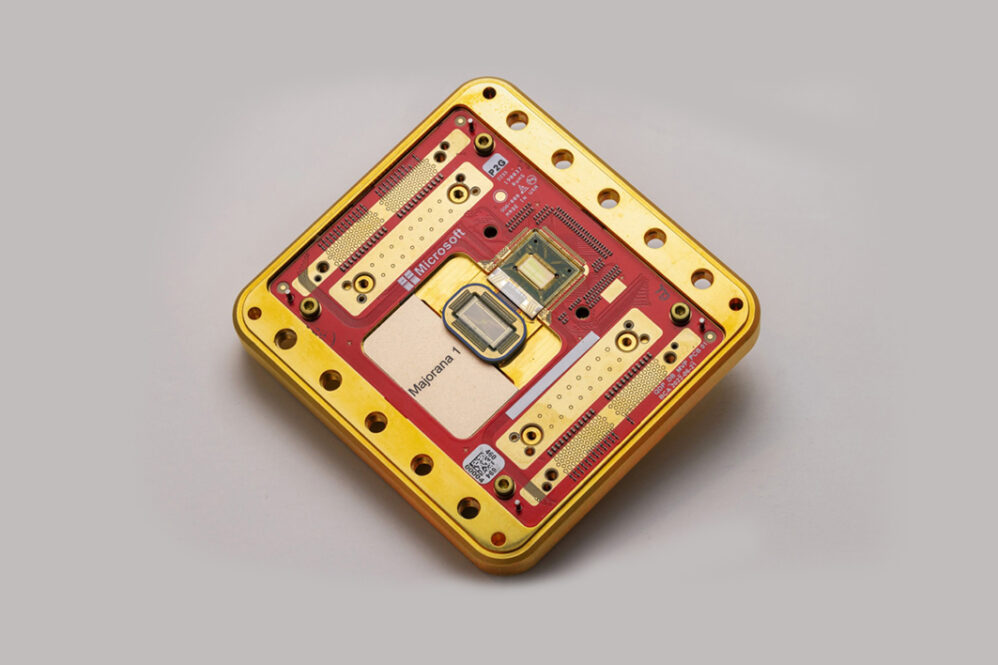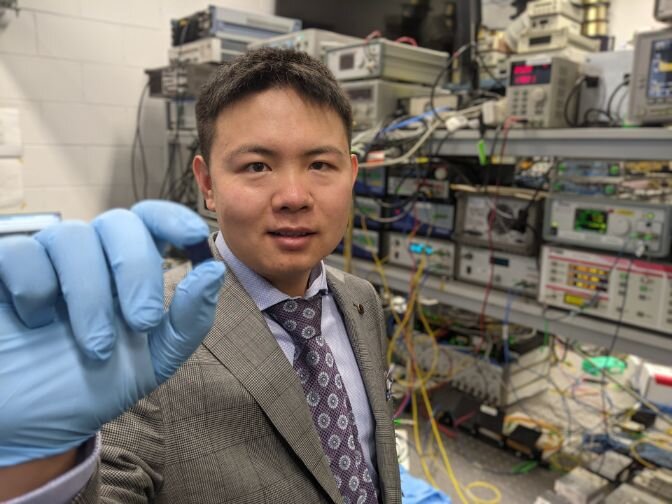Microsoft has achieved a significant milestone in quantum computing with their demonstration of the world’s first topological qubit. Building on their previously announced topoconductor breakthrough, the company is making rapid strides toward a fault-tolerant, scalable quantum computer.
The recently published research in Nature, complemented by data shared at the Station Q meeting, demonstrates functional quantum operations using Majorana Zero Modes (MZMs) – exotic quasiparticles that exist at the ends of topological superconducting nanowires. These particles, once theoretical constructs, now serve as the foundation for Microsoft’s quantum architecture.
At the core of this advancement is the tetron – a single-qubit device that enables two fundamental operations. First, measuring parity states in the topological nanowires, and second, creating superpositions through microwave reflectometry measurements of quantum dots. By demonstrating both Z and X Pauli measurements, Microsoft has achieved measurement-based control, unlocking the next phase of their development roadmap.
The architecture shows promising scalability. Microsoft has already placed eight topological qubits on a chip designed to eventually house one million – a scale that would transform scientific discovery. The digital control system employs simple pulses to connect and disconnect quantum dots from nanowires, vastly simplifying the traditionally complex analog control signals required by other quantum computing approaches.
This digital precision offers significant advantages for quantum error correction (QEC). Microsoft’s custom QEC codes reduce overhead approximately tenfold compared to previous state-of-the-art approaches, meaning fewer physical qubits are needed while potentially increasing clock speeds.
The Defense Advanced Research Projects Agency (DARPA) has recognized the potential of Microsoft’s approach, selecting them as one of two companies to advance to the final phase of their Underexplored Systems for Utility-Scale Quantum Computing program. This validation follows DARPA’s rigorous evaluation of Microsoft’s architectural designs and engineering plan for a fault-tolerant quantum computer.
Microsoft’s roadmap now focuses on implementing a 4×2 tetron array to demonstrate entanglement and measurement-based braiding transformations. The full eight-qubit array will enable quantum error detection on two logical qubits – a crucial step toward fault tolerance.
The implications extend far beyond computing milestones. A million-qubit quantum computer could revolutionize materials science, enabling the development of self-healing infrastructure materials, sustainable agricultural solutions, and safer chemical discovery processes. Calculations that currently require billions in experimental costs could potentially be solved through quantum computation.
Microsoft’s approach differs fundamentally from competitors by harnessing topological protection – a property that shields quantum information from environmental disturbances. Their measurements show impressive stability with error rates occurring only once per millisecond on average, with clear paths for further improvement.
With their hardware-protected topological qubit demonstrated and DARPA’s support secured, Microsoft appears poised to deliver a fault-tolerant prototype in “years, not decades” – potentially accelerating quantum computing’s timeline from scientific curiosity to practical technology capable of solving humanity’s most challenging computational problems.




